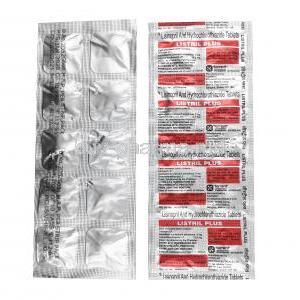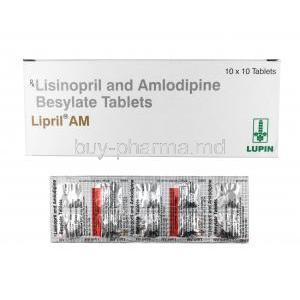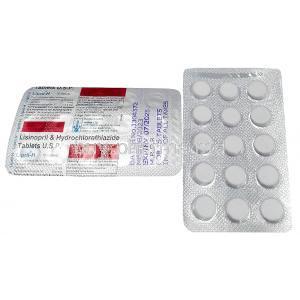Moxonidine
- 1. Introduction
- 2. Composition and Properties
- 3. Mechanism of Action
- 4. Primary Uses of Moxonidine
- 5. Off-Label Use and Emerging Therapies
- 6. Dosage and Administration
- 7. Side Effects and Management
- 8. Contraindications and Precautions
- 9. Special Considerations in Patient Populations
- 10. Overdosage: Symptoms and Management
- 11. Storage and Handling
- 12. Important Patient Information
1. Introduction
Overview of Moxonidine: Moxonidine is a used medication for treating high blood pressure, a common cardiovascular condition. It stands out among antihypertensive drugs due to its unique pharmacodynamic profile and effectiveness. Historical Development and Approval Status: Moxonidine has been developed through research in pharmacology and has received approval for clinical use. It represents an advancement in antihypertensive medications as it offers a distinct mechanism of action compared to previous options. Comparison with Antihypertensives: Compared to traditional antihypertensive drugs, Moxonidine is tolerable and has minimal chances of causing metabolic disturbances. This makes it a suitable choice for groups of patients.
2. Composition and Properties
Moxonidine is a new-generation alpha-2/imidazoline receptor agonist antihypertensive drug used for the treatment of mild to moderate essential hypertension 12. It is available in oral tablet form and is sold under the brand names Physiotens and Moxon 1. The chemical formula of Moxonidine is C9H12ClN5O, and its molecular weight is 241.68 g/mol 1. The drug has an oral bioavailability of 88% and a protein binding capacity of 7.2-10% 12. The liver metabolizes 10-20% of the drug, and the rest is excreted through the kidneys (90%) and feces (~1%) 2. The elimination half-life of Moxonidine is approximately 2.2-2.8 hours 1. The drug is not recommended for pregnant women 1.
3. Mechanism of Action
How Moxonidine Works in the Body: The way Moxonidine functions is a prime example of innovative pharmacology. It acts on the nervous system to regulate sympathetic activity, reducing peripheral vascular resistance. Interaction with Sympathetic Nervous System: This medication affects the sympathetic nervous system, which plays a crucial role in hypertension pathophysiology. Comparative Analysis with Blood Pressure Medications: When compared to other antihypertensive drugs, Moxonidine takes a unique approach by primarily targeting central pathways instead of peripheral ones for blood pressure regulation.
4. Primary Uses of Moxonidine
Moxonidine is an antihypertensive medication used to manage hypertension by lowering high blood pressure to target levels. It plays a role in managing cardiovascular risk factors as well. Moxonidine is often used alongside other antihypertensive medications to enhance its therapeutic effectiveness and minimize potential side effects 1234.
Here are some references that you can use to learn more about Moxonidine:
- CTD - Chemical, Disease and Drug Information
- DrugBank Online
- MIMS Malaysia
- Australian Prescriber - NPS MedicineWise
5. Off-Label Use and Emerging Therapies
Moxonidine has a wide range of off-label applications due to its diverse pharmacological effects. It has been observed to have some usefulness in managing symptoms related to anxiety, although in a conventional manner. Additionally, Moxonidine’s positive effects also extend to cardiovascular conditions, demonstrating its versatility as a therapeutic option 5678.
Here are some references that you can use to learn more about Moxonidine:
- CTD - Chemical, Disease and Drug Information
- DrugBank Online
- MIMS Malaysia
- Australian Prescriber - NPS MedicineWise
- Moxonidine - Wikipedia
- Moxonidine: Uses, Interactions, Mechanism of Action | DrugBank Online
- Moxonidine: Indication, Dosage, Side Effect, Precaution - MIMS
- Imidazoline Receptor Agonists: Moxonidine and Rilmenidine
6. Dosage and Administration
Dosage Recommendations: When using Moxonidine, the dosage should follow guidelines customized to each patient's requirements and clinical situation. It is crucial to make adjustments in the dosage for populations, especially those with renal impairment, to ensure that they receive the best possible therapeutic outcomes. To achieve therapeutic benefits while minimizing risks, it is essential to adhere to proper administration techniques and follow best practices when administering Moxonidine.

7. Side Effects and Management
Side Effects: Just like any other medication, Moxonidine can cause a variety of side effects, which can range from mild to moderate in severity. Adverse severe Reactions: Although uncommon, serious adverse reactions require medical attention and a thorough treatment plan evaluation. Strategies for Dealing with Side Effects: To effectively manage side effects, it is essential to take an approach that includes educating the patient, adjusting the dosage if necessary, and occasionally considering alternative medications.
8. Contraindications and Precautions
There are clinical scenarios where it is not recommended to use Moxonidine, so it's crucial to have a comprehensive medical history and assess the patient thoroughly. Extra caution should be exercised in patient populations due to the increased risk of adverse effects. It's essential to monitor the therapeutic effects when using Moxonidine alongside other medications in situations where multiple drugs are being prescribed.
9. Special Considerations in Patient Populations
Regarding patients, it's essential to be cautious when administering Moxonidine due to changes in how their bodies process medications and their increased sensitivity. If you're pregnant or breastfeeding, it's crucial to consider the risks and benefits of using Moxonidine, as it could potentially impact the health of both the fetus and newborn. While using Moxonidine in children is not as common it's still essential to monitor dosing and safety factors under strict clinical supervision.
10. Overdosage: Symptoms and Management
Identifying Overdosage
Detecting an overdose of moxonidine is crucial for minimizing its consequences. Vital signs to watch out for are drowsiness, slow heart rate, and low blood pressure. Healthcare providers must stay alert and promptly identify these symptoms to take action.
Immediate Steps and Medical Interventions
If you suspect an overdose, it is essential to seek medical help. Healthcare professionals often rely on supportive measures like intravenous fluids and vasopressors to manage blood pressure. Continuous monitoring of the heart and other vital signs is essential, and appropriate actions should be taken accordingly.
Long-Term Management of Overdosage
Long-term management's primary goal is to prevent complications and ensure ongoing monitoring. This may require making changes to the medication plan to avoid any relapses and carefully assessing how the patient manages their medication.
11. Storage and Handling
Proper Storage Conditions
Moxonidine should be kept at room temperature, away from direct sunlight and moisture. This helps maintain its effectiveness and reduces the likelihood of degradation.
Handling Precautions for Safety
Please ensure you handle the medication with your hands to avoid contamination. Make sure not to use the medicine after it has expired. To prevent ingestion, keep the drug out of reach of children.
Disposal Guidelines
Disposing of moxonidine is crucial to avoid environmental harm or accidental misuse. Make sure to follow the disposal guidelines provided by healthcare authorities or pharmacies.
12. Important Patient Information
Educating Patients about Moxonidine
When informing patients about moxonidine, it is crucial to discuss why it's prescribed, any possible side effects, and the significance of following the prescribed treatment plan. Patient education should be tailored to each individual's needs and delivered in a way that is easy to understand.

Importance of Adherence to Treatment
It is crucial to emphasize the importance of following the regimen for taking moxonidine to manage blood pressure effectively. Let's talk about the outcomes that may arise from not adhering to the prescribed dosage, including the risks associated with uncontrolled hypertension and its complications.
Addressing Common Patient Concerns and Questions
Healthcare professionals should take the initiative to address patients' concerns, including potential side effects, possible interactions with other medications, and necessary lifestyle adjustments. By offering clear, brief, and precise information, they can help reduce patient worries and improve adherence to treatments.
















